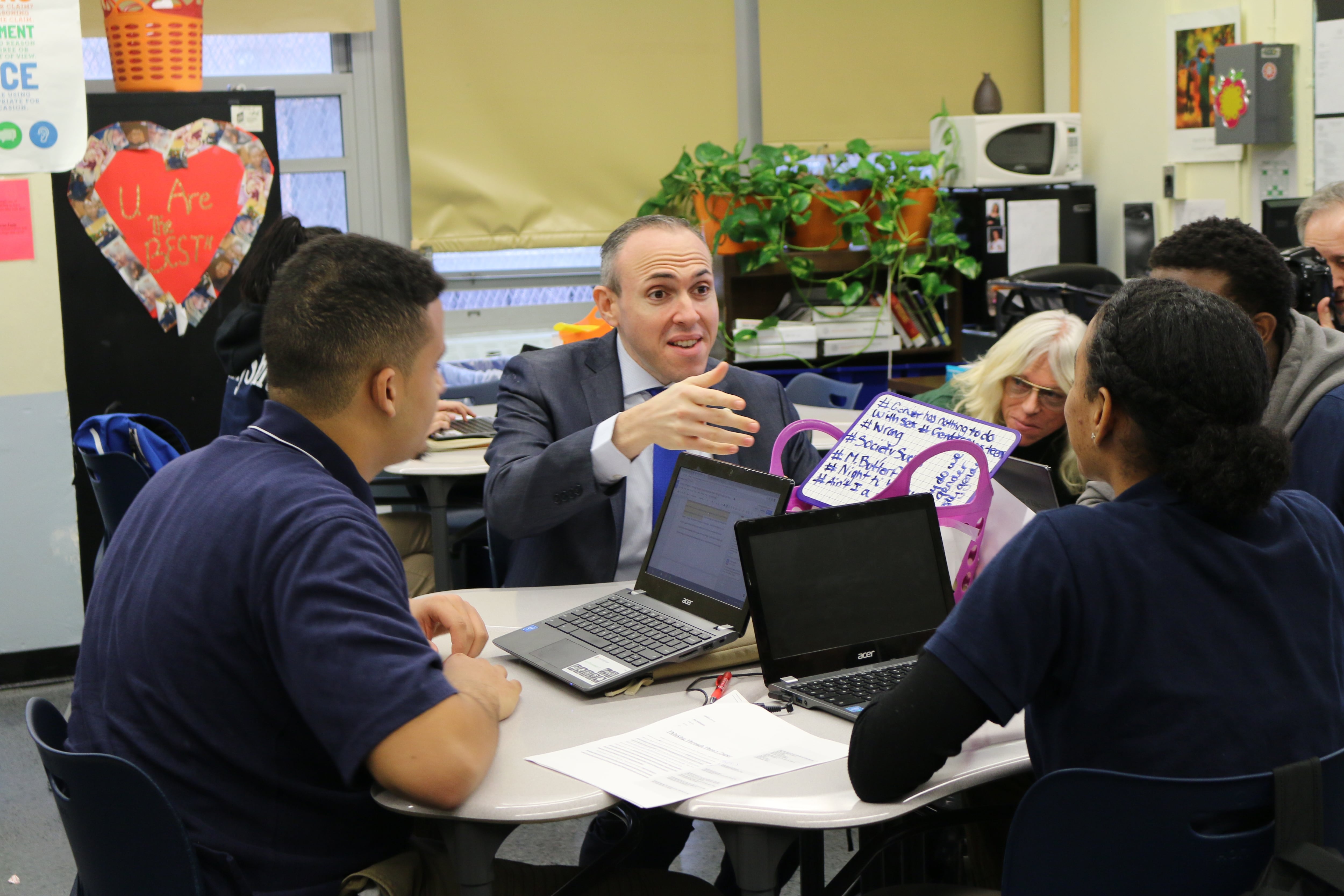To reopen school buildings as the threat of the coronavirus still looms, New York state is requiring schools conduct daily temperature checks, provide fresh masks to teachers every day, operate buses at a fraction of their normal capacity, and comply with the rest of the state’s 135-pages worth of guidance.
How much will all of this cost for New York City, the nation’s largest school system? And how will schools be able to pay for it amid slashes to the education department’s budget? A group of New York City Council members are trying to find out.
On Tuesday, the heads of the City Council’s education committee, the Women’s Caucus, and the Black, Latino, and Asian Caucus sent a letter to the mayor and governor demanding cost estimates and a spending plan. The price tag is a “key factor in reopening safely,” they wrote, and said the state must step in if there’s not enough money to cover the bill for returning to in-person learning. That could be a tall order given the bleak finances of the city and state due to the coronavirus fallout.
“It is crucial that the City and State Administrations work together to make sure that we know how much funding is needed to reopen safely and that we work together on a plan that allows us to comply with that figure,” the letter states.
School districts in New York are staring down a Friday deadline to submit plans for complying with a raft of state safety guidelines that are sure to be expensive to meet. Meanwhile, the city’s education budget has been slashed by more than $700 million and more cuts could be on the way.
Gov. Andrew Cuomo in his last budget negotiations won extraordinary power to pare-back state spending if revenues tank. He said over the weekend that additional cuts could come in the next two weeks. Cuomo has projected up to a 20% reduction in education spending, which would equal $2.3 billion for New York City schools alone if more federal dollars don’t pour in soon. Congress is debating stimulus plans that are unlikely to fill all the projected spending gaps.
Teachers in New York City and across the country have argued that it will take more money than ever — not less — to return to classrooms in the wake of a pandemic.
It’s likely that more staff will be needed at a time when class sizes must shrink to meet social distancing requirements. Compounding the staffing challenges of in-person learning, the city has estimated up to 20% of teachers might request medical accommodations to work remotely, and others might take family leave to care for young kids or because they have high risk relatives at home. Students will need intensive support to fill learning gaps from an abrupt shift to remote learning, as well as mental health services for those coping with the toll of the health crisis.
Councilman Mark Treyger, chair of the city’s education committee, noted that both the city and state budget were set before schools were handed guidance for reopening, so the spending plans do not account for all that’s needed. He has added his voice to a growing chorus warning that in-person learning should not kick off in the fall, or that the city simply isn’t ready yet to pull off such a giant challenge.
“Until we see a spending plan by the state to help school districts comply, there can be no physical reopening of buildings,” he said. “There’s no cutting corners here.”
Mayor Bill de Blasio and Chancellor Richard Carranza’s plan for reopening school buildings calls for students to attend classes part-time on a rotating schedule. The plan has been met with resistance from teachers and families who fear for their safety and don’t want to return to buildings. Others say the partial reopening will do little to meet their child care needs, as some students are expected to be in school for as little as one day a week.
Read the full letter here.







